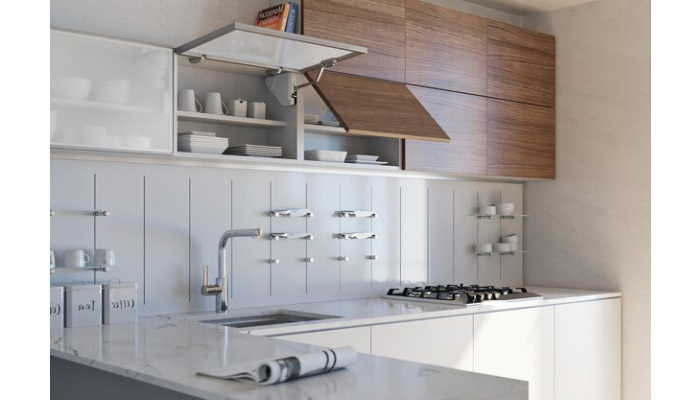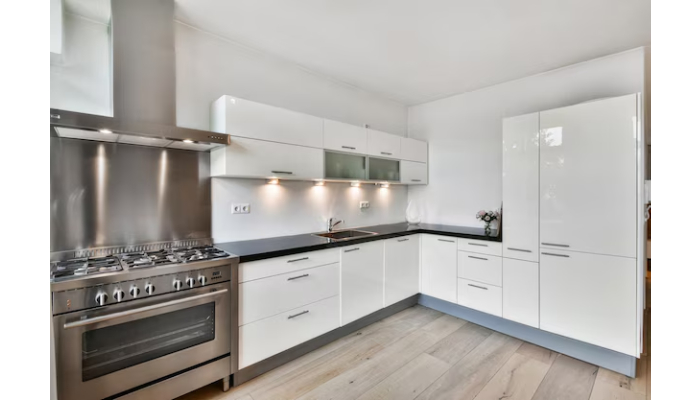The Role Of Edge Bands In Kitchen Furniture: Enhancing Durability And Aesthetics
When it comes to designing and maintaining high-quality kitchen furniture, every detail matters. One crucial but often overlooked component of kitchen furniture hardware is edge banding. Edge bands play a vital role in improving both the durability and aesthetic appeal of kitchen furniture, ensuring that cabinets, countertops, and other wooden elements last longer while maintaining a sleek, finished look. Without edge bands, raw wooden edges would be exposed, leading to potential damage from moisture, heat, and physical wear.
Edge banding serves as a protective layer that prevents chipping, warping, and deterioration of furniture surfaces. Additionally, it enhances the overall design by creating smooth, seamless finishes that contribute to the kitchen’s aesthetic appeal. In this article, we will explore the importance of edge bands, the different types available, their benefits, and how they contribute to making kitchen furniture more durable and visually appealing.
Understanding Edge Bands And Their Importance
Edge bands are thin strips of material applied to the edges of wooden furniture, particularly engineered wood like plywood, MDF, or particleboard. These bands serve two primary functions—protecting the core material from environmental damage and giving a polished, professional look to the furniture.
In kitchen furniture hardware, edge bands are particularly essential due to the high moisture and high-heat environment. Without edge bands, the wooden core can absorb moisture from spills, steam, and humidity, leading to swelling, warping, and eventual breakdown. Additionally, exposed wooden edges are more susceptible to mechanical damage, such as chipping and cracking, reducing the lifespan of kitchen furniture.

Key Benefits Of Edge Bands In Kitchen Furniture
- Moisture and Heat Resistance
Since kitchens are prone to steam, spills, and temperature fluctuations, edge bands act as a barrier that prevents moisture penetration, reducing the risk of swelling and damage to the wooden core. - Enhanced Durability
Edge bands reinforce the structural integrity of cabinets and countertops by providing an additional layer of protection against physical wear and tear. - Aesthetic Appeal
Modern edge bands come in various colors, textures, and finishes, allowing designers and homeowners to achieve a seamless look that complements the overall kitchen decor. - Smooth and Safe Edges
Raw wood edges can be sharp or rough, posing a safety risk. Edge bands ensure a smooth, finished surface that is safer to touch and handle. - Increased Lifespan of Kitchen Furniture
By preventing common issues such as chipping, peeling, and moisture damage, edge bands significantly extend the life of kitchen furniture, reducing the need for frequent repairs or replacements.
Types Of Edge Bands Used In Kitchen Furniture Hardware
Edge bands are available in various materials, each offering unique benefits in terms of durability, appearance, and cost-effectiveness. The most common types used in kitchen furniture hardware include:
1. PVC Edge Bands
- Made from polyvinyl chloride (PVC), these edge bands are popular due to their durability, flexibility, and affordability.
- They are resistant to moisture, heat, and chemicals, making them ideal for kitchen environments.
- Available in a wide range of colors, textures, and thicknesses to match different furniture designs.
2. ABS Edge Bands
- Acrylonitrile Butadiene Styrene (ABS) edge bands are an eco-friendly alternative to PVC.
- They are durable, lightweight, and resistant to heat and moisture.
- ABS bands are widely used in premium kitchen furniture due to their superior aesthetics and sustainability.
3. Wood Veneer Edge Bands
- These are thin strips of real wood that enhance the natural beauty of wooden kitchen furniture.
- Ideal for high-end kitchens that emphasize a classic or rustic look.
- Require additional finishing and sealing for moisture resistance.
4. Acrylic Edge Bands
- Provide a high-gloss, luxurious finish that enhances modern kitchen aesthetics.
- Highly durable and resistant to scratches and impacts.
- Commonly used in high-end kitchen designs.
5. Melamine Edge Bands
- A budget-friendly option made from melamine-coated paper or plastic.
- Suitable for basic kitchen furniture where aesthetics and durability are less critical.
Choosing The Right Edge Band For Your Kitchen Furniture
Selecting the best edge band for kitchen furniture depends on various factors, including durability, appearance, and budget. Here are some key considerations when choosing edge bands:
- Material Compatibility – Ensure that the edge band material matches the core material of the furniture for a seamless and durable finish.
- Resistance to Kitchen Conditions – Kitchens have high moisture and heat exposure, so choosing moisture-resistant and heat-resistant edge bands (such as PVC or ABS) is crucial.
- Aesthetic Match – The edge band should complement the furniture’s color, texture, and design to maintain a cohesive kitchen look.
- Ease of Maintenance – Some edge bands require additional sealing or finishing, while others are maintenance-free. PVC and ABS are low-maintenance options.
- Sustainability – For eco-conscious homeowners, ABS, and wood veneer edge bands are environmentally friendly choices.
Installation And Maintenance Of Edge Bands
Proper installation and maintenance are key to ensuring the longevity and performance of edge bands in kitchen furniture hardware.
Installation Methods
Edge bands are applied using specialized adhesives and edge banding machines. The most common installation methods include:
- Hot-Melt Adhesive Application – A heated adhesive is applied to the band, which is then pressed onto the furniture edge. This method is quick and ensures a strong bond.
- Laser Edge Banding – A modern, seamless technique where a laser melts the band’s surface, fusing it directly to the furniture. This method provides a clean, premium finish.
- Manual Application – Hand-applied edge bands using glue and a roller. Suitable for DIY projects but less durable than machine-applied options.
Maintenance Tips
To keep kitchen furniture edge bands in optimal condition, follow these maintenance tips:
- Clean Regularly – Wipe down edge bands with a soft cloth and mild detergent to remove grease and stains.
- Avoid Excess Moisture – Although edge bands provide moisture resistance, prolonged exposure to water can weaken adhesives over time.
- Inspect for Damage – Check for peeling or chipping, and repair damaged sections promptly to prevent further deterioration.
- Use Gentle Cleaners – Harsh chemicals can damage edge bands, so always use gentle, non-abrasive cleaning agents.
Conclusion
Edge bands are an essential part of kitchen furniture hardware, offering both functional and aesthetic benefits. They protect wooden furniture from moisture, heat, and physical damage while enhancing the overall design. With various materials available, such as PVC, ABS, wood veneer, acrylic, and melamine, homeowners can choose the best edge banding option to suit their kitchen’s needs.
By selecting high-quality edge bands and ensuring proper installation and maintenance, kitchen furniture can remain durable, stylish, and long-lasting. Whether you are designing a new kitchen or upgrading existing furniture, investing in the right edge banding solution is a smart choice for both practicality and visual appeal.




